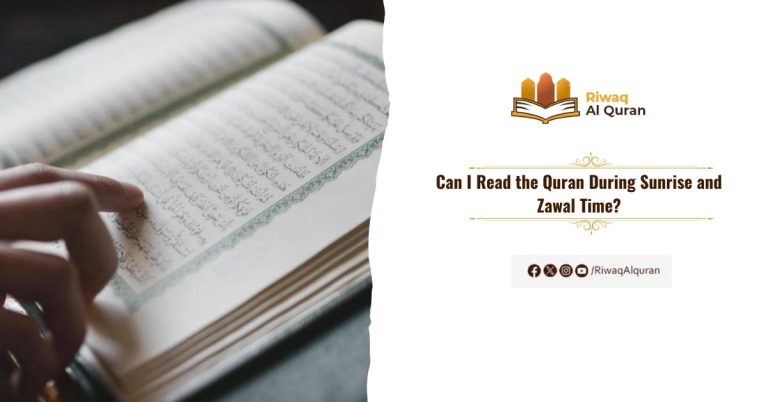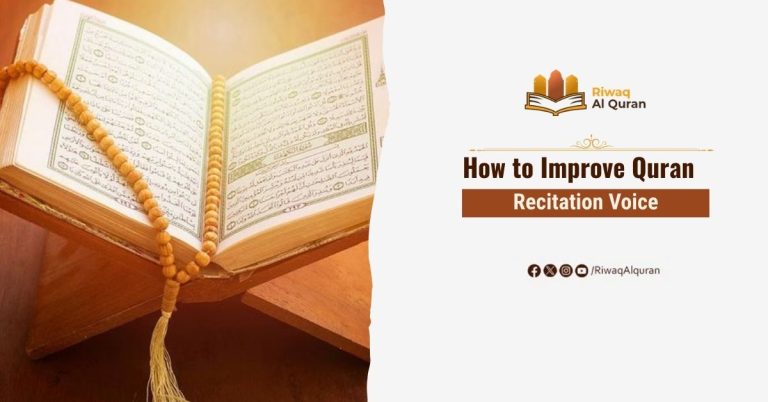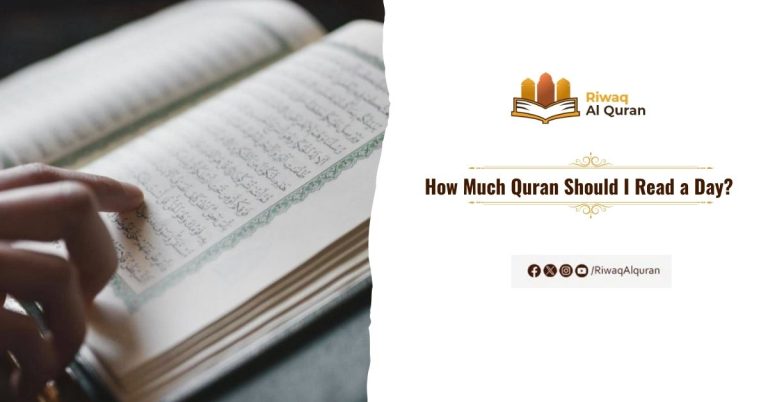Ikhfaa, meaning “to conceal” in Arabic, is a Tajweed rule applied when Noon Sakinah (ن) or Tanween (ً ٍ ٌ) is followed by one of 15 specific letters. It softens the Noon sound into a nasal Ghunnah lasting two counts, blending seamlessly with the next letter. These letters include ت, ث, ج, and others, enhancing Quranic recitation’s fluency and beauty. Properly mastering Ikhfaa ensures adherence to Tajweed and improves the rhythm and clarity of recitation.
Reading the Holy Quran is essential for all Muslims, and proper recitation with Tajweed enhances its beauty and meaning. Our prophet emphasized the Quran’s significance, promising blessings, protection, and intercession for its reciters. In this blog, we will explore Ikhfaa, its meaning, types, and application in Quran recitation, providing a complete guide for understanding this important Tajweed rule.
Table of Contents
Ikhfaa Meaning
In Arabic, إخفاء (Ikhfaa) means “to hide” or “conceal.” It refers to a pronunciation rule in which the sound of a letter is partially concealed or hidden when followed by certain other letters. This rule is applied to the letter Noon Sakinah (ن) or Tanween (ً ٍ ٌ), producing a nasal sound (Ghunnah) while keeping the Noon sound subtle, rather than fully pronounced.
In Tajweed, Ikhfaa refers to a specific rule of pronunciation when Noon Sakinah (نْ) or Tanween (ً ٍ ٌ) is followed by one of the 15 specific letters in the Arabic alphabet:
ت, ث, ج, د, ذ, ز, س, ش, ص, ض, ط, ظ, ف, ق, ك
The sound of Noon is hidden or partially concealed, and a nasal sound called Ghunnah is made for two counts. The rule ensures a smooth and correct recitation of the Quran, making the pronunciation more fluid and harmonious.
Importance of Ikhfaa
But before elucidating Ikhfa and its details, we must know their importance and application while reciting the Holy Quran. We all know that reading the Quran well means reciting it in the proper manner and according to the Tajweed rules.
Aisha narrated that the Prophet Muhammad (PBUH) said: “The one who is proficient with the Quran will be with the noble and righteous scribes (the angels), and the one who reads it and stumbles over it, finding it difficult, will have two rewards.” [Sunan Ibn Majah]
Ikhfa Letters
The 15 letters of Ikhfa (إخفاء) are the remaining letters of the Arabic alphabet after excluding the letters of Idgham, Izhar, and Iqlab. These letters are: ت, ث, ج, د, ذ, ز, س, ش, ص, ض, ط, ظ, ف, ق, ك
These letters require the sound of the Noon Sakinah (نْ) or Tanween to be pronounced with a Ghunnah and slight concealment when followed by one of them.
Now, how to remember Ikhfa letters? Learning these letters by heart and applying them when reciting the Quran could be challenging for many people. So, these letters were collected in the poetic lines:
- صِفْ ذَا ثَنَا كَمْ جَادَ شَخْصٌ قَدْ سَمَا
- دُمْ طَيِّبًا زِدْ فِي تُقَي ضَعْ ظَالِمًا
If any of these letters come after a Noon Saakin or Tanween, the word must be read with a nasal sound for the duration of two harakat or beats.


Experience Riwaq Al Quran Classes
Watch real moments from our live sessions at Riwaq Al Quran and see how we bring learning to life. These clips highlight our interactive, student-focused approach designed to keep learners engaged, motivated, and actively involved in every step of their educational journey.
Levels of Ikhfaa in Tajweed
The types of Ikhfaa are categorized based on the relationship between the articulation point of the Noon Sakinah or Tanween and the following letter. These are:
1. Strong Ikhfaa (Closest to Izhar)
This occurs when the letter following the Noon Sakinah or Tanween is far from the articulation point of Noon (e.g., ق, ك). The sound is slightly clearer, but still includes ghunnah.
2. Moderate Ikhfaa
This is the middle level of Ikhfaa and occurs when the articulation point of the following letter is neither too far nor too close to Noon (e.g., ج, ش, د). The balance of concealment and nasalization is maintained.
3. Light Ikhfaa (Closest to Idgham)
This occurs when the following letter is closest to the articulation point of Noon (e.g., ت, ط, ض). The sound is more concealed, with stronger nasalization.
How to Pronounce Ikhfa?
Here’s how Ikhfaa is pronounced: When Noon Sakin (ن) or a letter with Tanween is followed by any of the letters not included in Idgham, Iqlab, or Izhaar, the Noon Sakin or Tanween is pronounced with a soft nasal sound (Ghunnah) held for two counts. The sound of Noon Sakin (ن) remains but is not fully or heavily pronounced; it is subtly hidden. There are two types of Ghunnah in Ikhfaa:
1. The Heavy Ghunnah (غنة مفخمة)
If the Tanween or the Noon Saakina is followed by one of the seven heavy letters (ظ, ق, ط, غ, ض, ص, خ), the sound of Ghunnah should also be pronounced with heaviness to match the characteristic of these letters.
2. The Light Ghunnah (غنة مرققة)
If the Noon Saakin or the Tanween is followed by a light letter, the sound of Ghunnah should be pronounced in a soft and light manner, aligning with the natural characteristics of the following letter to maintain the proper flow of recitation.
What Are the Rules of Ikhfaa in Tajweed?
Ikhfaa is not limited to the rules of Noon Saakin and Tanween but also extends to Ikhfaa Shafawi. As we know, there are 3 rules of Meem Sakinah rules:
- Izhar Shafawi
- Idgham Mutamathelynee Sagheer
- Ikhfaa Shafawi
The last rule is enacted only when the letter baa follows a Meem Sakinah, the reciter then should add Ghunnah for 2 counts. The condition here is that the baa must be Mutaharik, i.e., have a diacritic (Fathah, Dammah, Kasra).
Scholars, however, differ on how this Ghunnah should be executed. Some suggest that Meem’s sound should be slightly hidden by leaving a small gap between the lips. Others fully close their lips while pronouncing the Meem but still maintain the Ghunnah.
Ikhfa Shafawi Examples in the Quran:
- (Al-Fil: 4) تَرْمِيهِم بِحِجَارَةٍ مِّن سِجِّيلٍ
- (Al-Baqarah: 33) …فَلَمَّآ أَنۢبَأَهُم بِأَسْمَآئِهِمْ قَالَ أَلَمْ أَقُل لَّكُمْ إِنِّىٓ أَعْلَمُ غَيْبَ ٱلسَّمَـٰوَٰتِ وَٱلْأَرْضِ
Read more about: Ikhfa, Idgham, Izhar, And Iqlab With Examples
How to Recognize the Ikhfaa Rule in the Moshaf
To apply the Ikhfaa rule correctly in Tajweed, it is important to recognize when and how it occurs in the Quranic text. Below are the steps to help you during recitation:
- Look for a Noon Sakinah or Tanween.
- Check the following letter after Noon or Tanween.
- Confirm that the letter is one of the 15 Ikhfaa letters.
- Notice the absence of a shaddah or merging symbol for Idgham.
- Identify that there is no clear articulation like Izhar.
- Recognize that the Noon or Tanween sound is partially concealed.
- Apply the Ghunnah (nasalization) lasting two counts when reciting.
Common Mistakes Relating to Al-Ikhfaa Rule
While mastering this rule enhances the beauty of Quranic recitation, many learners struggle with common mistakes that can affect their pronunciation. Below are some of the frequent errors to watch out for:
1. Mispronouncing the Letters of Ikhfaa
Learners sometimes confuse the letters of Ikhfaa with those of other Tajweed rules, such as Idgham or Izhar, leading to incorrect articulation.
2. Neglecting the Ghunnah
One common mistake is omitting or shortening the ghunnah (nasalization) required during Ikhfaa, which should last approximately two counts.
3. Making the Sound Too Clear
Some learners make the sound of the Noon Sakinah or Tanween too apparent, resembling Izhār, which contradicts the rule of partial concealment.
4. Overly Concealing the Sound
Others overly conceal the sound, making it indistinguishable or merging it with the following letter, which leads to an unclear recitation.
5. Incorrect Timing
The ghunnah duration may be either rushed or prolonged excessively, disrupting the rhythm and flow of proper Tajweed.
Ikhfa Examples in the Quran
Examples of Ikhfa can be found in many spots in the Quran. Here are some practical Ikhfa Noon Saakin examples to master the rule and its application:
- (Al-Khaf: 43) (وَلَمْ تَكُن لَّهُۥ فِئَةٌ (يَنصُرُونَهُ)ۥ مِن دُونِ ٱللَّهِ وَمَا كَانَ (مُنتَصِرًا
- (Fatir: 44) أَوَلَمْ يَسِيرُوا۟ فِى ٱلْأَرْضِ (فَيَنظُرُوا۟) كَيْفَ كَانَ عَٰقِبَةُ ٱلَّذِينَ مِن قَبْلِهِم…
- (An-Nisa: 71) يَٰٓأَيُّهَا ٱلَّذِينَ ءَامَنُوا۟ خُذُوا۟ حِذْرَكُمْ (فَٱنفِرُوا۟) ثُبَاتٍ أَوِ ٱنفِرُوا۟ جَمِيعًا
- (An-Nisa: 141) ٱلَّذِينَ يَتَرَبَّصُونَ بِكُمْ (فَإِن كَانَ) لَكُمْ فَتْحٌۭ مِّنَ ٱللَّهِ قَالُوٓا۟ أَلَمْ نَكُن مَّعَكُمْ…
Difference Between Ikhfa and Izhaar?
Izhar means when there are any of the throat letters after Noon Saakin or Tanween, Izhar will take place. It means “clear” as we pronounce the “n” sound of the noon Sakin or tanween without pulling or Ghunnah.
1. Izhar Letters in English:
- H – هـ
- Ain – ع
- Haa – ح
- Ghayn – غ
- Khaa – خ
On the other hand, Ikhfa is to hide the “n” sound. If any of the following fifteen letters appears after Noon Saakin or Tanween, Ikhfa will be done. It means to slightly “hide”, when you see any of these letters, make a light nasal sound, and add Ghunnah. Remember to hide the “n” sound from the Noon Sakin and Tanween.
2. Ikhfa Letters in English:
- Ta – ت
- Tha – ث
- Jeem – ج
- Dal – د
- Thal – ذ
- Zay – ز
- Seen – س
- Sheen – ش
- Sad – ص
- Dad – ض
- Ta – ط
- Zah – ظ
- Fa – ف
- Qaf – ق
- Kaf – ك


Why Students Love Learning with Riwaq Al Quran
Hear directly from our students about how Riwaq Al Quran Academy has transformed their connection with the Book of Allah. Their experiences reflect the dedication, care, and quality that guide every step of our teaching.
Join Our Family and Start Learning Tajweed!
This post has covered Ikhfaa in great detail Alhamdulillah. If you still have any questions or would like to learn about it further, our skilled teachers at Riwaq Al Quran are ready to help! A wide array of Online Quran Courses is available to serve learners of all levels. So, join the relevant course that suits you best and start learning Tajweed properly!
We offer several courses such as:
- Online courses for kids.
- Online Quran classes for kids and adults.
- Online Arabic courses
- Online Ijazah courses
- Online Islamic Studies courses.
Here are a sample of our set of Quran Courses that will be helpful for you:
- Online Tafseer Course: Delve into Quranic meanings with our insightful online Tafseer course.
- Noorani Qaida Online: Learn Quranic basics efficiently through our Noorani Qaida online program.
- Online Quran Recitation Course: Enhance Quranic recitation skills through our expert-led online course.
- Online Tajweed Classes: Master Tajweed rules for beautiful Quranic recitation in online classes.
- Quran Memorization Online Course: Memorize the Quran effectively with our specialized online memorization course.
- Online Qirat Course: Explore diverse Qirat styles with our comprehensive online Qirat course.
- Online Quran Classes for Kids: Nurture a love for the Quran in kids through interactive online classes.
Conclusion
Ikhfaa rules are a vital step in mastering Tajweed and improving Quranic recitation. By learning the 15 Ikhfaa letters, recognizing their occurrences in the Quran, and perfecting Ghunnah, reciters can enhance the beauty and correctness of their recitation.
If you’re struggling with the Ikhfaa rule or Tajweed in general, don’t worry! With consistent practice and guidance from skilled teachers, anyone can master this essential rule. At Riwaq Al Quran, we offer a variety of online Tajweed courses designed for all levels to help you achieve your Quranic learning goals. Join us today and take the first step toward perfecting your recitation!


































